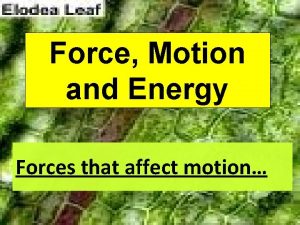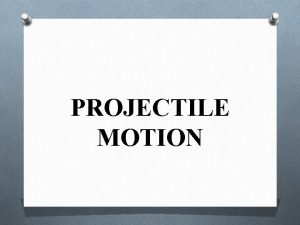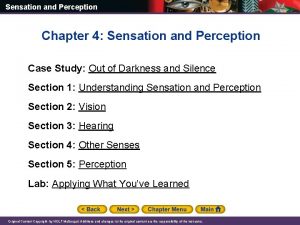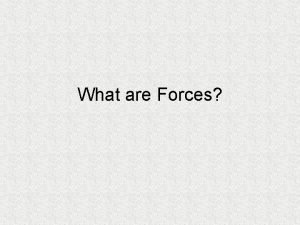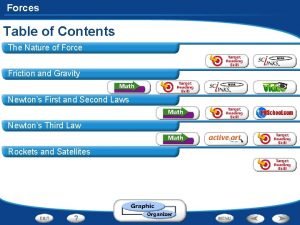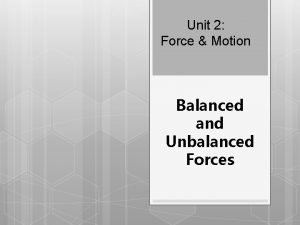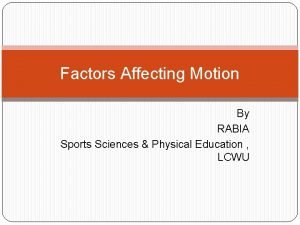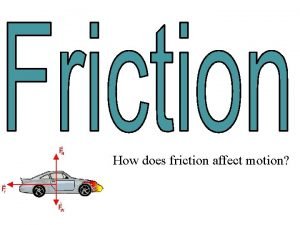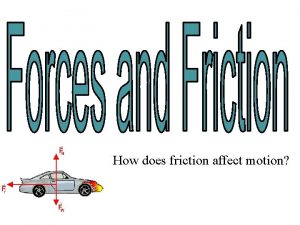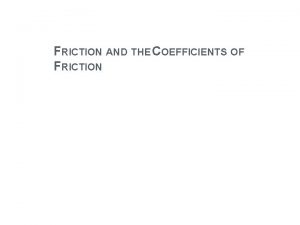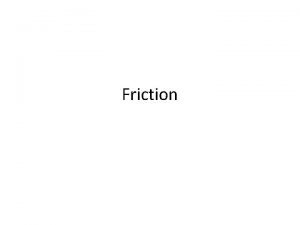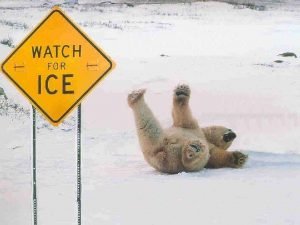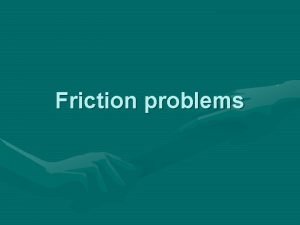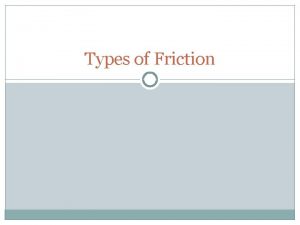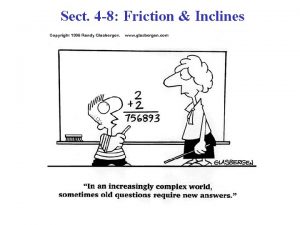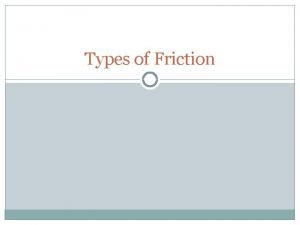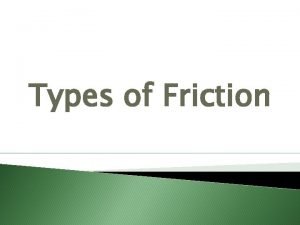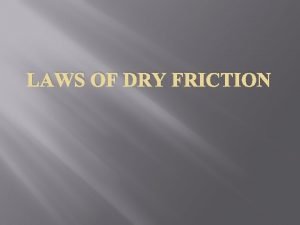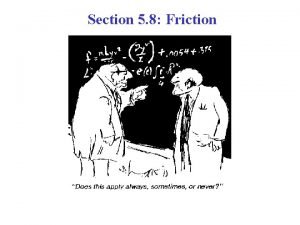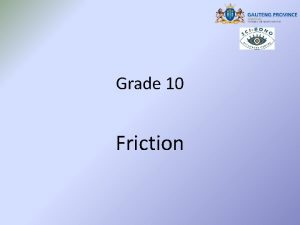How does friction affect motion What Causes Friction














- Slides: 14

How does friction affect motion?

What Causes Friction? • Friction is the force that opposes the motion between two surfaces that touch. • The surface of any object is rough. • Even an object that feels smooth is covered with tiny hills and valleys. • The contact between the hills and valleys of two surfaces causes them to stick, resulting in friction.

What Causes Friction? • The amount of friction depends on: – Roughness of the surfaces (type of surface) – Motion of the surfaces – Force pushing the surfaces together



Friction and Heat • Try rubbing your hands together at a quick pace. . You should feel heat! • Friction between surfaces produces heat • Friction causes the molecules on the surface of your hands to move faster. • As the molecules move faster, the temperature of the object increases.

Types of Friction • Kinetic friction occurs when force is applied to an object and the object moves. • Examples: Sliding Friction: pushing an object across a surface Rolling Friction: between wheels and a surface Fluid Friction: opposes the motion of objects traveling through a fluid (air or water)

Fluid Friction: Air Resistance • Most objects falling through air experience a type of fluid friction called air resistance. • Air resistance is not the same for all objects. • The greater the surface area of the object the greater the air resistance. • However, since the elephant has more mass, it has more downward force of gravity and falls faster.

• Some shapes, known as streamlined shapes, cause less air resistance than others. Aeroplanes and cars are streamlined, so that they move through the air as easily as possible.

Types of Friction • Static friction occurs when force applied to an object does not cause the object to move.

• Friction can be a useful force because it prevents our shoes slipping on the pavement when we walk and stops car tires skidding on the road.

• Ice causes very little friction, which is why it is easy to slip on an icy day. But this is a good thing for ice skating and sledding!

Reducing Friction • To reduce the amount of friction, apply a lubricant between two surfaces. • Motor oil, wax, and grease are examples. • Friction can also be reduced by rolling, rather than pushing, an object.

Increasing Friction • Friction increases as surfaces are made rougher. • Friction increases when the force between two objects is increased.
 What forces can affect motion in plants?
What forces can affect motion in plants? Example of projectile motion
Example of projectile motion How does the law of continuity affect stroboscopic motion?
How does the law of continuity affect stroboscopic motion? What is force
What is force The nature of force
The nature of force Drawing that shows friction
Drawing that shows friction An example of a balanced force
An example of a balanced force Factors that affect projectile motion
Factors that affect projectile motion Factors affecting motion
Factors affecting motion What causes friction
What causes friction What causes friction
What causes friction What causes friction
What causes friction Factors affecting friction
Factors affecting friction Proximate cause and ultimate cause
Proximate cause and ultimate cause Proximate behaviour in animals
Proximate behaviour in animals
